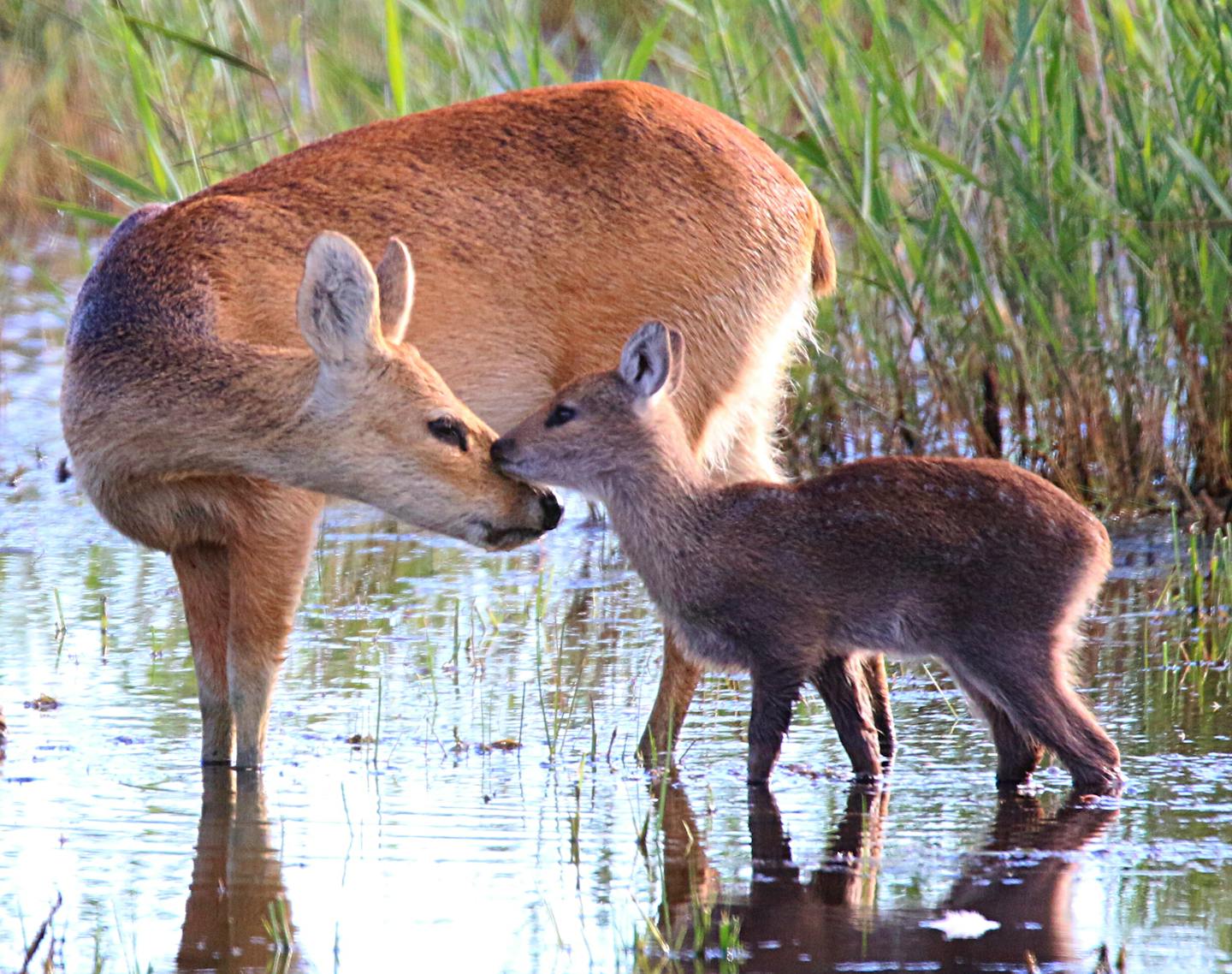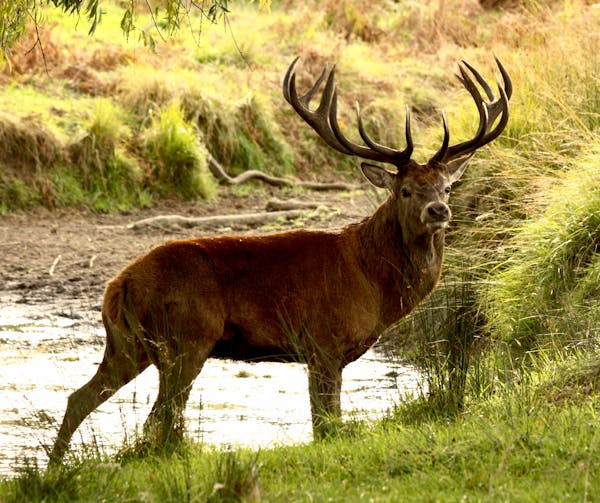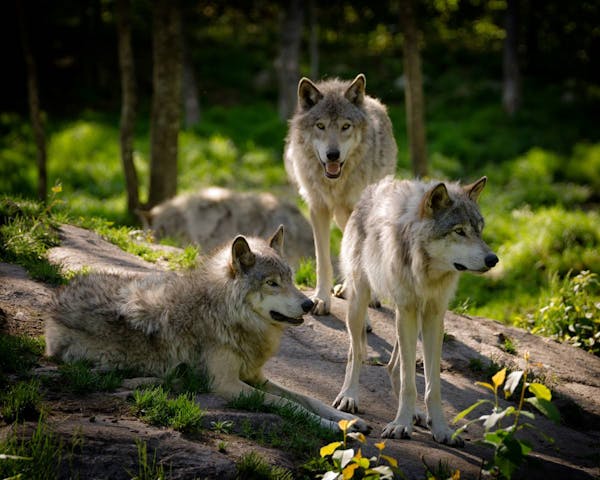Chinese water deer: Why they grow fangs instead of antlers
Each Wednesday, One Earth’s “Species of the Week” series highlights a relatively unknown and fascinating species to showcase the beauty, diversity, and remarkable characteristics of our shared planet Earth.
Take a sprinkle of bat, a dash of rabbit, a pinch of goat, and a handful of deer, and you’ve got yourself a water deer! Also known as a vampire deer because of its fangs — yes, fangs — water deer are native to Korea and China, but have spread, after first being imported to Great Britain in the 1870s, France, Argentina, England and parts of the United States. From a distance, they look a lot like regular deer. But get a little closer, and this species' quirks become apparent.
Water deer are more closely related to tiny musk deer rather than other deer. This is also why they usually have a darker brown coating of fur than regular deer, and with a lighter shade covering the front of its neck and underside.
Their Latin name translates to “without armor,” because these woodland creatures don’t have antlers. Neither males nor females grow the boney adornments for fighting or sexual attraction. Instead, they grow tusks up to an average of two inches long that resemble impressive, and dangerous, fangs. These large canines have no other function but as weapons.

Image credit: USFWS, Gentry George
The water deers’ bodies appear thicker than normal deer. The bulkier look isn’t due to body weight, though. Instead, their body structure, supported by powerful hind legs that are longer than their front legs, raises their haunches at a higher angle than their shoulders. The shape gives them a less sleek, more stocky appearance.
Despite their strength, this species only grows to just below two feet tall when full-grown, and weighs an average 20 – 31 pounds. Their back legs aid them in moving very fast across land, not so much by running, but more like a rapid, elongated hopping.
Unlike regular deer, their ears are rounded instead of pointy. From straight on, their faces look almost teddy bear-like. But careful of those fangs!
The males, or bucks, use their tusks to fight off other bucks for potential mates and to protect themselves against predators. However, unlike antlered deers, fighting between tusked water deer rarely results in death. Instead, their sharp fangs cause serious injuries.
Water deer get their name from their preferred habitat, near rivers, streams, swamps, brooks, and other sources of water. They’re also incredibly adaptable and are able to live in cold climates, which is why they’ve been able to survive in various northern locations. And, as excellent swimmers, known to tread up to seven miles without rest, they move between between islands easily, and are likely to continue enjoying a plentiful existence.
Support Nature Conservation
.png?auto=compress%2Cformat&w=200)



